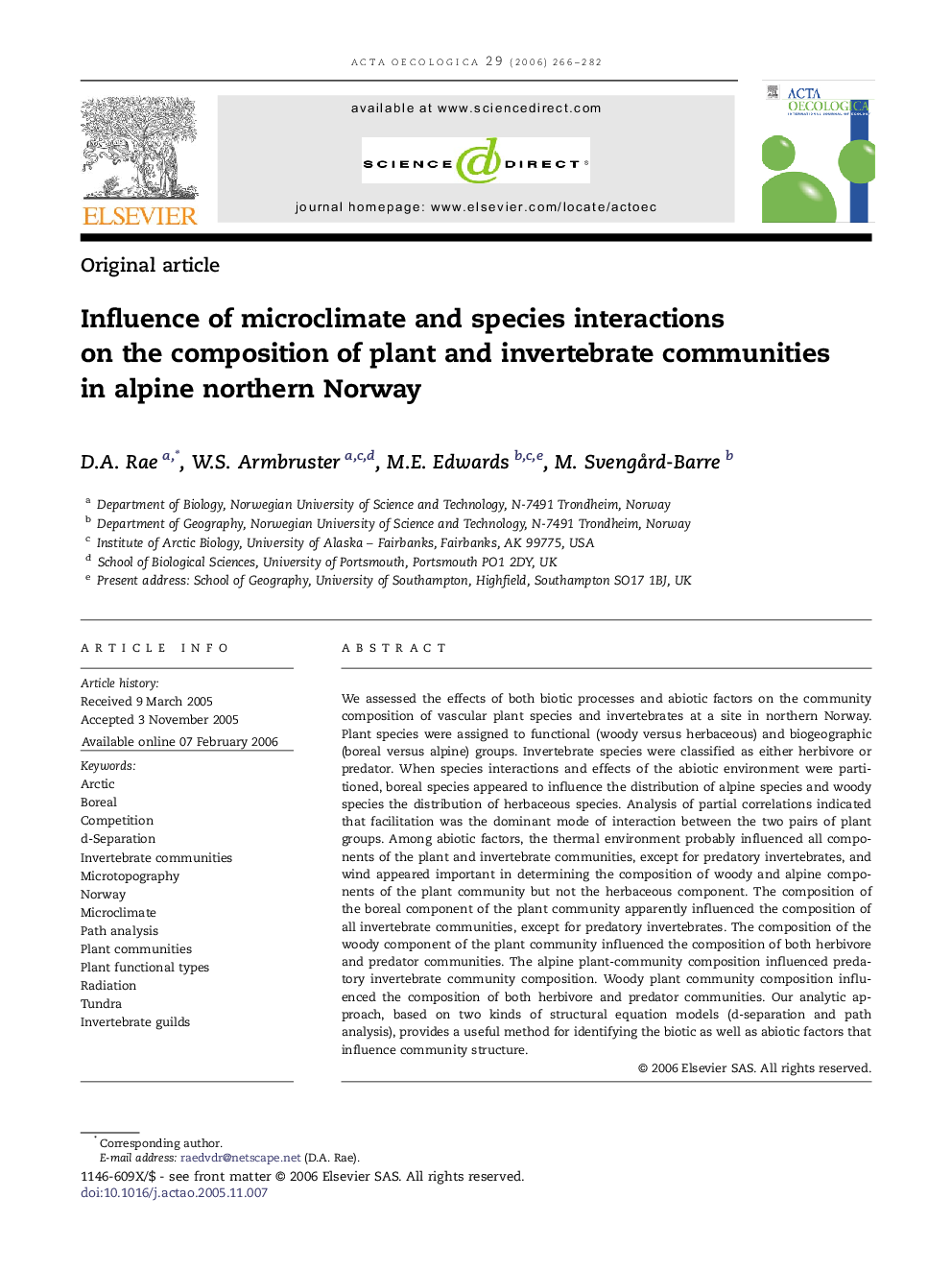| Article ID | Journal | Published Year | Pages | File Type |
|---|---|---|---|---|
| 4381748 | Acta Oecologica | 2006 | 17 Pages |
Abstract
We assessed the effects of both biotic processes and abiotic factors on the community composition of vascular plant species and invertebrates at a site in northern Norway. Plant species were assigned to functional (woody versus herbaceous) and biogeographic (boreal versus alpine) groups. Invertebrate species were classified as either herbivore or predator. When species interactions and effects of the abiotic environment were partitioned, boreal species appeared to influence the distribution of alpine species and woody species the distribution of herbaceous species. Analysis of partial correlations indicated that facilitation was the dominant mode of interaction between the two pairs of plant groups. Among abiotic factors, the thermal environment probably influenced all components of the plant and invertebrate communities, except for predatory invertebrates, and wind appeared important in determining the composition of woody and alpine components of the plant community but not the herbaceous component. The composition of the boreal component of the plant community apparently influenced the composition of all invertebrate communities, except for predatory invertebrates. The composition of the woody component of the plant community influenced the composition of both herbivore and predator communities. The alpine plant-community composition influenced predatory invertebrate community composition. Woody plant community composition influenced the composition of both herbivore and predator communities. Our analytic approach, based on two kinds of structural equation models (d-separation and path analysis), provides a useful method for identifying the biotic as well as abiotic factors that influence community structure.
Keywords
Related Topics
Life Sciences
Agricultural and Biological Sciences
Ecology, Evolution, Behavior and Systematics
Authors
D.A. Rae, W.S. Armbruster, M.E. Edwards, M. Svengård-Barre,
